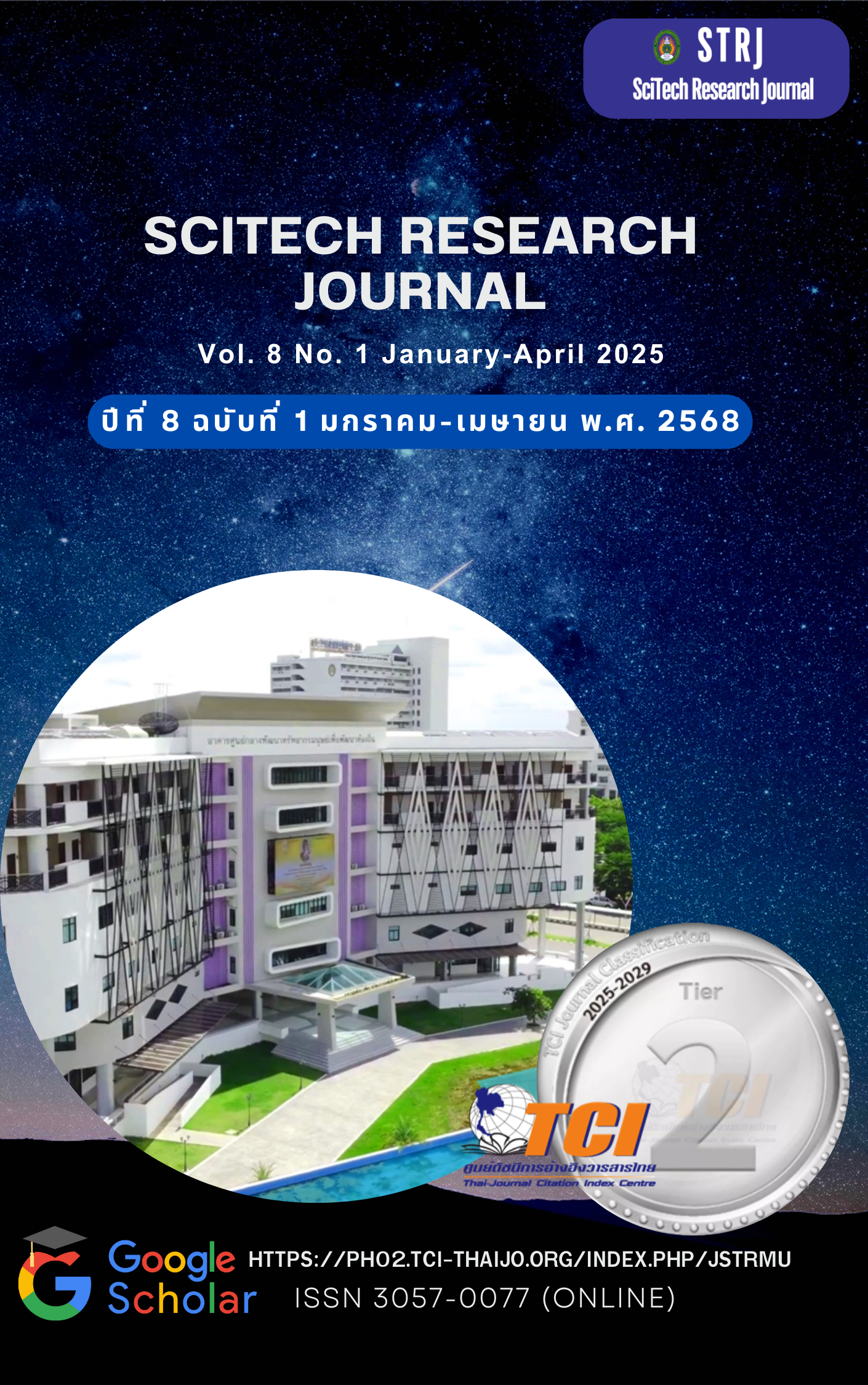การพัฒนาซีรัมเสมือนจริงสำหรับการตรวจกรองแอนติบอดีเพื่อใช้ในการเรียน การสอนภาคปฏิบัติการวิชาวิทยาศาสตร์การบริการโลหิต
คำสำคัญ:
ซีรัมเสมือนจริง, การตรวจกรองแอนติบอดี, อัลบูมิน, สีเหลืองบทคัดย่อ
วัตถุประสงค์ เพื่อเตรียมซีรัมเสมือนจริงที่มีสีเหลืองและสีเหลืองอ่อนเสมือนกับสีซีรัมจริงที่ได้จากเลือดของมนุษย์ เพื่อใช้ในการทดสอบ antibody screening ที่ให้ผลการทดสอบเป็นลบและบวก โดยวิธี conventional tube test (CTT) และ column agglutination technology (CAT).
การทดลอง ทำการเตรียมซีรัมเสมือนจริงจากงานวิจัยก่อนหน้า โดยการลดปริมาณของอัลบูมินเป็น 0.1 กรัม/เดซิลิตร และไม่เติมและเติม anti-D (IgG) จากนั้นทำการเจือจางซีรัมเสมือนจริงให้มีอัตราส่วนการเจือจางเท่ากับ 1:2, 1:4 และ 1:8 ตรวจลักษณะของซีรัมเสมือนจริงด้วยตาเปล่า วัดค่าการดูดกลืนแสง (optical density) ความถ่วงจำเพาะ (specific gravity) และเปรียบเทียบค่าการดูดกลืนแสงและความถ่วงจำเพาะ โดยใช้สถิติทดสอบ Kruskal - Wallis test ทำการทดสอบ antibody screening ด้วยวิธี CTT และ CAT
ผลการทดลอง ซีรัมเสมือนจริงที่มีอัตราส่วนการเจือจางที่แตกต่างกัน เมื่อดูด้วยตาเปล่าให้สีเหลืองและสีเหลืองอ่อนที่แตกต่างกัน และมีค่าการดูดกลืนแสง ความถ่วงจำเพาะ ที่แตกต่างกันอย่างมีนัยสำคัญทางสถิติ (p < 0.05) ผลการทดสอบ antibody screening พบว่าซีรัมเสมือนจริงที่ไม่เติม anti-D (IgG) ทุกอัตราส่วนการเจือจาง ให้ผลการทดสอบเป็นลบจริงและไม่เกิดผลบวกปลอม ส่วนซีรัมเสมือนจริงที่เติม anti-D (IgG) ทุกอัตราส่วนการเจือจาง ให้ผลการทดสอบเป็นบวกจริงและไม่เกิดผลลบปลอม
สรุปผลการทดลอง ซีรัมเสมือนจริงที่เตรียมโดยการลดปริมาณอัลบูมิน และมีอัตราส่วนการเจือจางที่แตกต่างกัน ให้ลักษณะสีเหลืองที่แตกต่างกัน และให้ผลการทดสอบ antibody screening ด้วยวิธี CTT และ CAT ที่ป็นผลลบและผลบวกได้จริง โดยไม่เกิดผลบวกปลอมและผลลบปลอม
เอกสารอ้างอิง
Butler, T., Bradley, C.A. & Owensby, J.E. (1992). Plasma components protect erythrocytes
against experimental haemolysis caused by mechanical trauma and by hypotonicity. Int J Exp Pathol, 73(1), 27-33.
Caironi, P. & Gattinoni, L. (2009). The clinical use of albumin: the point of view of specialist in intensive care. Blood transfusion, 7, 259-267. https://doi.org/10.2450/2009.0002-09
Kim, H.N. & Ko, D.H. (2024). Transfusion-transmitted infections. Blood Res. https://doi.org/10.1007/s44313-024-00014-w
Lapierre, Y., Rigal, D., Adam, J., Josef, D., Meyer, F., Greber, S., & Drot, C. (1990). The gel test: a new way to detect red cell antibody reactions, Transfusion, 30(2), 109-113.
Na Thalang, O. (1993). Application of the Gel test for antibody screening and identification. J Hematol Transfus Med, 3(4), 299-306.
Reinhart, W.H., Piety, N.Z., Deuel, J.W., Makhro, A., Schulzki, T., Bogdanov, N., Goede, J.S.,Bogdanova, A., Abidi, R. & Shevkoplyas, S.S. (2015). Washing stored red blood cells in an albumin solution improves their morphologic and hemorheologic properties. Transfusion, 55(8), 1872-1881.
Roback, J.D., Combs, M.R., Grossman, B.J. & Hillyer, C.D. (2008). Identification of antibodies to red cell antigens. In Technical Manual (16th ed). American Association of Blood Banks. 465-498.
Yimklib, W. (2023). Research competency: routine to research (R2R). Lawarath Social E-Journal, 5(1), 175-191.
Yothinarak, A. (2018). Virtual serum preparation for unexpected antibody screening. In Homvisasevongsa, S. (ed), Science, technology and innovation: following the wisdom of the king for sustainable national development. The 6th academic science and technology conference (pp.HS-172-179).
Yothinarak, A. & Prommano, O. (2017). Preliminary study of preparation of virtual serum for unexpected antibody screening. In Silalai, N. (ed), Science and technology as a key driver towards Thailand 4.0. The 5th academic science and technology conference (pp.HS-870-877).



